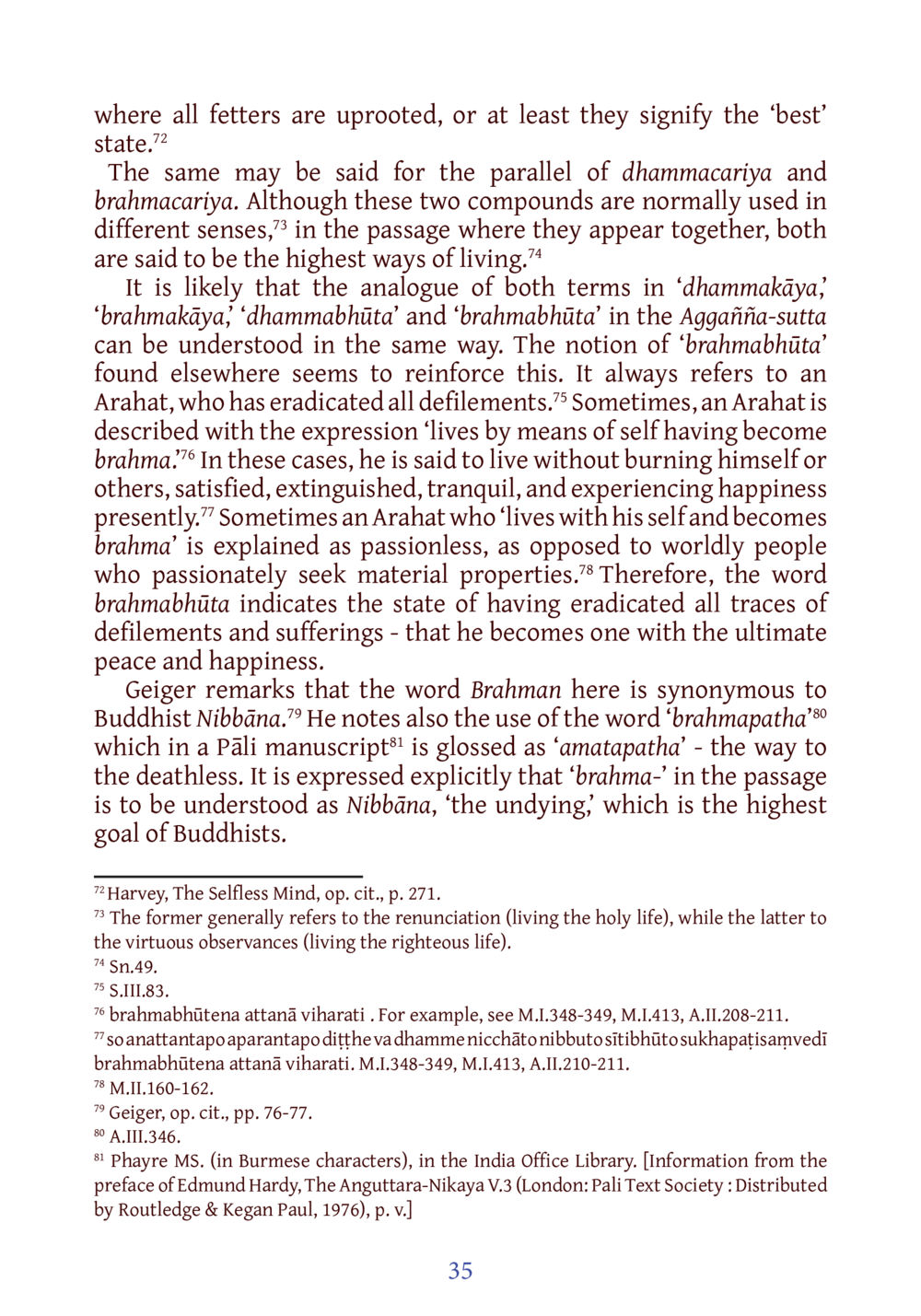Understanding Brahmabhūta and the Path to Nibbāna : หน้า 56/141
DIRI Journal : หน้า 56/141 An exploration of the concepts 'brahmabhūta' and 'Nibbāna' in Buddhism, highlighting their significance in achieving ultimate peace.
0 ครั้ง

สรุปเนื้อหา
The text discusses how 'brahmabhūta' refers to the state of having eradicated all defilements, allowing one to experience ultimate peace and happiness. It parallels 'dhammacarĺa' and 'brahmacarĺa' as the highest ways of living. The connection between these terms and the concept of Nibbāna is explored, with the idea of 'brahma' representing the undying state sought by Buddhists. The Arahat is identified as the one who achieves this state, living free from worldly passions and defilements. References to Geiger's insights emphasize the synonymy of 'Brahman' and Nibbāna, illustrating the path to the deathless as central in Buddhist practice.
หัวข้อประเด็น
-brahmabhūta
-Nibbāna
-Arahat
-Buddhist concepts
-dhammacarĺa
-brahmacarĺa
-peace and happiness
ข้อความต้นฉบับในหน้า
where all fetters are unrooted, or at least they signify the ‘best’ state.
The same may be said for the parallel of dhammacarĺa and brahmacarĺa. Although these two compounds are normally used in different senses, in the passage where they appear together, both are said to be the highest ways of living.
It is likely that the analogue of both terms in ‘dhammakāya,’ ‘brahmakāya,’ ‘dhamma bhūta’ and ‘brahma bhūta’ in the Agañña-sutta can be understood in the same way. The notion of ‘brah mā bhūta’ found elsewhere seems to reinforce this. It always refers to an Arahat, who has eradicated all defilements. Sometimes, an Arahat is described with the expression ‘lives by means of self having become brahma.’ In these cases, he is said to live without burning himself or others, satisfied, extinguished, tranquil, and experiencing happiness presently. Sometimes an Arahat who ‘lives with his self and becomes brahma’ is explained as passionless, as opposed to worldly people who passionately seek material properties. Therefore, the word brahmabhūta indicates the state of having eradicated all traces of defilements and sufferings- that he becomes one with the ultimate peace and happiness.
Geiger remarks that the word Brahman here is synonymous to Buddhist Nibbāna. He notes also the use of the word ‘brahmapatha’ which in a Pāli manuscript is glossed as ‘amatapatha’ - the way to the deathless. It is expressed explicitly that ‘brahma -’ in the passage is to be understood as Nibbāna, ‘the undying,’ which is the highest goal of Buddhists.
หน้าหนังสือทั้งหมด

1

2

3

4

5

6

7

8

9

10

11

12

13

14

15

16

17

18

19

20

21

22

23

24

25

26

27

28

29

30

31

32

33

34

35

36

37

38

39

40

41

42

43

44

45

46

47

48

49

50

51

52

53

54

55

56

57

58

59

60

61

62

63

64

65

66

67

68

69

70

71

72

73

74

75

76

77

78

79

80

81

82

83

84

85

86

87

88

89

90

91

92

93

94

95

96

97

98

99

100

101

102

103

104

105

106

107

108

109

110

111

112

113

114

115

116

117

118

119

120

121

122

123

124

125

126

127

128

129

130

131

132

133

134

135

136

137

138

139

140

141
หนังสือที่เกี่ยวข้อง
Load More
